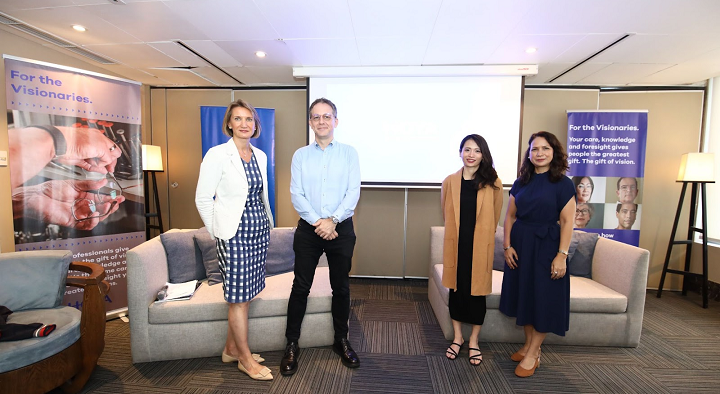
Genetics, prolonged near-work activities, and lack of outdoor time are just some of the known risk factors that may lead to a greater likelihood of myopia in children. In the Philippines where approximately 30% of the population are children between the ages of 6-18 years old, an estimated 8 million Filipino children may suffer from myopia. In an effort to battle progressive visual impairments that significantly impact children’s quality of life, academic achievements, and overall long-term eye health, HOYA Vision Care pioneers eye care solutions through its advanced and innovative product lines. The global optical and healthcare solutions company recently hosted a roundtable discussion last June 7, 2023, in Makati City to share its knowledge and expertise in myopia control amongst children through the help of its 6-year clinical study,, that was recently presented at the Association for Research in Vision and Ophthalmology (ARVO) 2022 conference in Denver, Colorado in the U.S.
For over 60 years, HOYA Vision Care has been a passionate and global leader in optical technology innovation. As a manufacturer of high-quality, high-performing eyeglass lenses, HOYA continuously aims to bring the best possible vision care solutions to Eye Care Professionals and their patients around the world. In 2018, the company proudly rolled out its innovative and evidence-based myopia management solution with its research partner, the Centre for Myopia Research at The Hong Kong Polytechnic University4,5.
“Through intensive research on myopia that is aligned with the aggressive development of our product offerings, HOYA aims to be at the forefront of myopia management as we remain steadfast in our commitment to producing innovative eye care solutions that aim to deliver optimal results for all our patients,” shares HOYA Vision Care CEO Alexandre Montague.
Combating Myopia in the Philippines
Myopia, or nearsightedness, is a vision condition wherein individuals can see objects clearly up close but may appear blurred further away. Currently, global data have shown that over 22.9% of the world population have myopia with 2.7% having high myopia. It is predicted to increase to 49.8% and 9.8% of which is high myopia by 20504..
Philippine Eye Research Institute study has shown that Filipino children are most likely to be affected by visual impairment, which doubles when they reach adolescence. As students massively transitioned to the digital platform brought about by the pandemic, research has shown that children who use screens for greater than three hours per day are almost four times more likely to be myopic compared to those spending one hour on screens per day.
While myopia is irreversible and incurable which can lead to an increased risk of having vision-threatening conditions such as cataracts, glaucoma, and retinal detachment if it is left unaddressed, the condition can be managed through early intervention and regular consultations with eye care practitioners who are equipped to provide professional advice in finding the right myopia management options. Moreover, the Philippine government constantly pushes for regular and comprehensive eye screening among kindergarten students through the National Vision Screening Program (NVSP) which was mandated in 2019.
These efforts are aligned with HOYA’s commitment to constantly provide innovative solutions to cater to the ever-changing needs of its patients. During the discussion, Oxana Pastushenko talks about HOYA’s award-winning product, MiYOSMART, which are spectacle lenses that correct the visual defect using the revolutionary D.I.M.S. (Defocus Incorporated Multiple Segments) technology, proven to slow down myopia progression by 60%.
“While we cannot control factors that may lead to rapid myopia progression in children, we are keen to ensure that innovative, non-invasive myopia management options are accessible to parents as MiYOSMART becomes available in the Philippines. Children’s vision is worth protecting, alongside the upcoming launch of MiYOSMART, HOYA will also be initiating an awareness campaign aimed at parents, educating them on the risks of myopia towards long-term eye health and the impact of poor eyesight on academic performance. It is important for parents to monitor their children’s eyesight by having regular eye checks so as not to deprive children from the right to see clearly. Let us act now, and give them more opportunity tomorrow”. concludes Montague.

